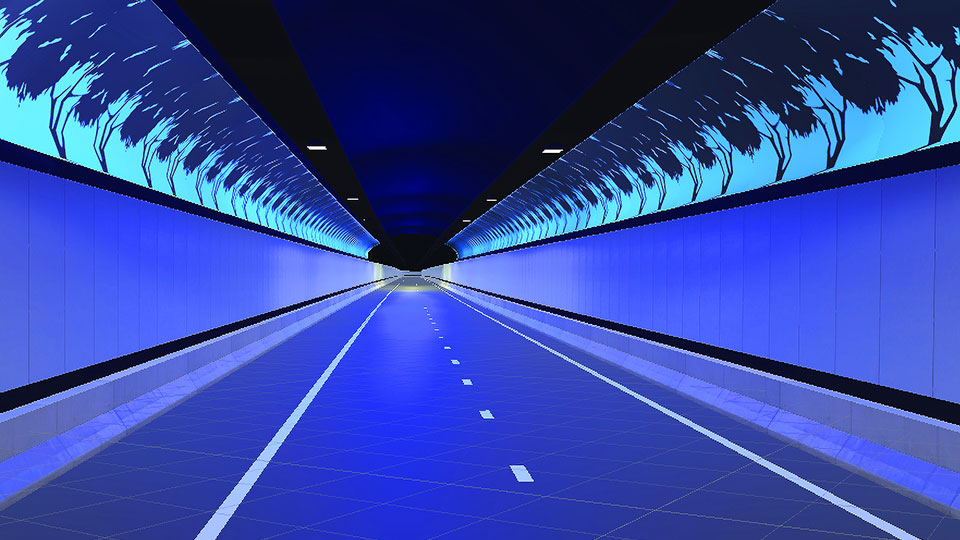Thursday, 30 November 2023

Austroads has published the findings of two studies that investigated driver behaviour and the impact of the aesthetic tunnel treatments as participants drove through a simulated version of Sydney’s NorthConnex (NCX) tunnel.
“Anecdotal evidence has suggested that drivers may find the tunnel environment unpleasant and the driving task monotonous,” explained Ross Guppy, Transport Infrastructure Program Manager at Austroads. “Crashes associated with tunnels tend to create major disruptions to network traffic flows and well-designed features have the potential to improve safety and traffic performance.”
Using a TRACSLab virtual reality (VR) driving simulator located at the University of New South Wales, the project investigated whether the addition of aesthetic design features in long and complex tunnels, such as the NCX, could positively impact driver experience without affecting driving performance (Study 1). The project also aimed to establish whether the simulator could be used as a safety-assured means of developing and testing in-tunnel aesthetic design features (Study 2).
Study 1 included participants driving through both the simulated baseline NCX tunnel (without any design features) and the simulated treated NCX tunnel (with all design features). In Study 2, participants drove through both the simulated tunnel and the real NCX tunnel.
The studies collected behavioural data from driving in both the simulated and real tunnel. The key variables assessed were mean speed, speed violations, standard deviation (SD) of lane position, and SD of acceleration. Eye gaze locations were also analysed to see whether participants were looking around differently within the treated tunnels compared to the baseline tunnel.
The findings from Study 1 revealed that the aesthetic design features induced several positive perceptions and driver states, and enhanced drivers’ spatial awareness. The design features attracted drivers’ attention; however, there was no discernible evidence from this study that the diversion of attention to the design features compromised driving performance.
Study 2 demonstrated a strong correlation between the simulated and real tunnel environments for mean speed, standard deviation of speed, mean lateral lane position and drivers’ subjective perceptions of the tunnel environment.
“Our conclusion is that the VR driving simulator is a valid platform for the assessment of driving behaviour and performance on surface roads and therefore the findings presented in Study 1 would most likely be replicated in the real NorthConnex tunnel,” said Ross Guppy.
“This project offers a framework through which driving simulators can be used to inform the design of features both in the development of new tunnel projects and the potential resolution of issues in operational tunnels.”
Download Simulator Evaluation of Aesthetic Design Features in NorthConnex Road Tunnel: Study 1
Download Validation of a Driving Simulator for Road Tunnel Research: Study 2
Join us for a webinar on Tuesday, 5 December 2023 at 1 pm AEDT with authors Prof Michael Regan, Dr Prasannah Prabhakharan, Julius Secadiningrat, Jack Mazaraki, Nicholas Rozenauers, Nigel Casey and Richard Merrett.
No charge but registration is essential.
Can’t make the live session?
Register and we’ll send you a link to the recording.
